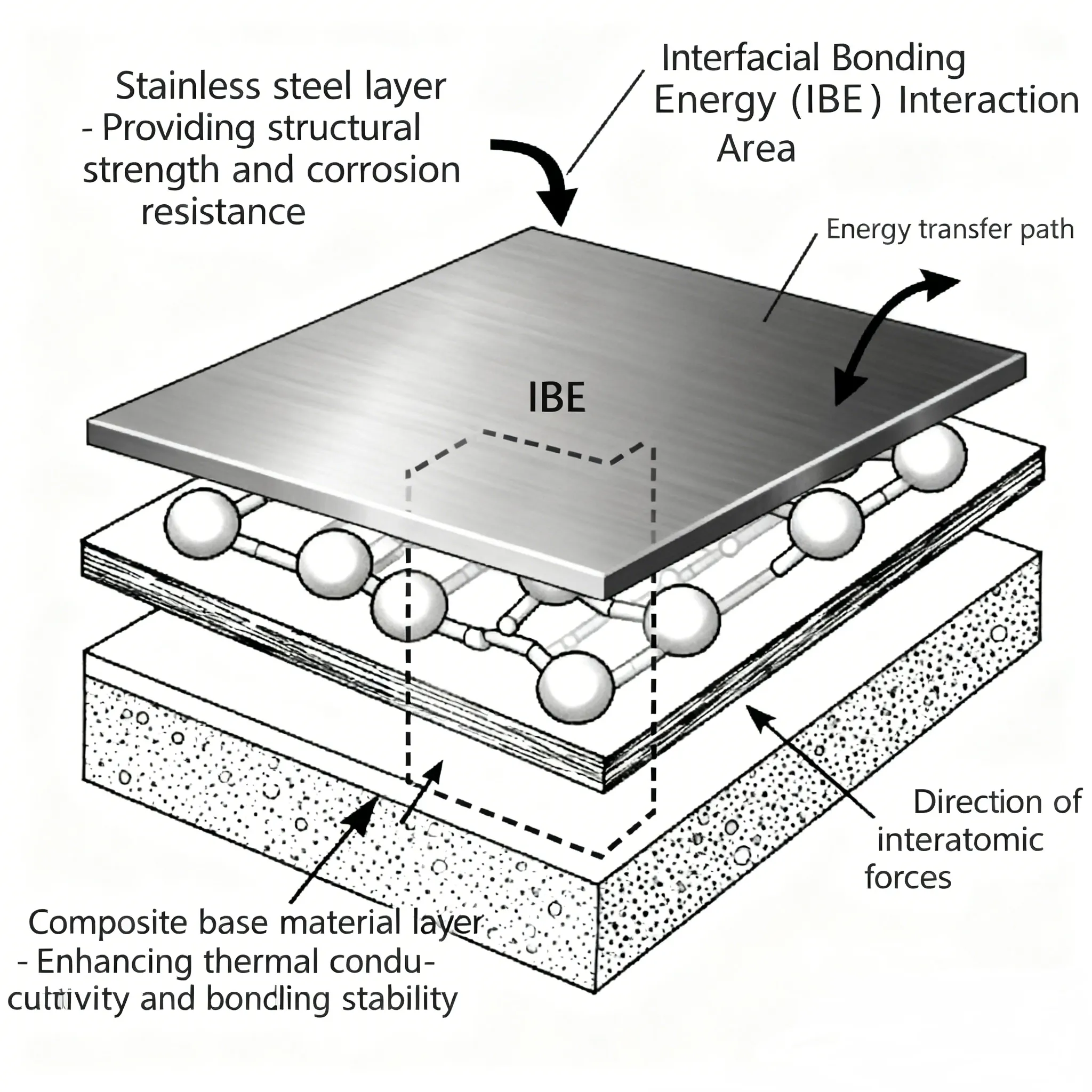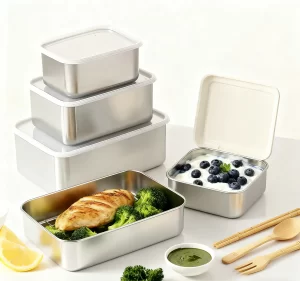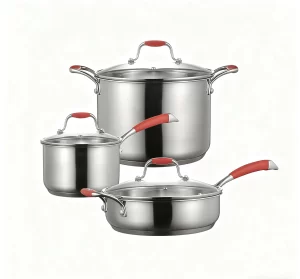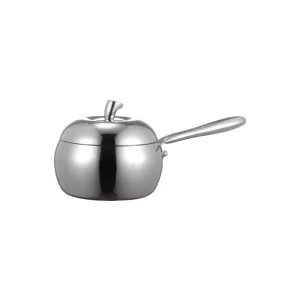として stainless steel cookware factory with 12 years in the industry, we don’t talk fluff—we use in-plant test data, process insights, and disruptive perspectives to help B2B clients nail their procurement strategy and stand out from competitors.
目次
トグルOpening: A True Story That Made a European Distributor Slap His Thigh
Last year, Mark, a German distributor, stormed into our office fuming:
“Your 3-layer bottom cookware—after 3 months in a Munich Michelin kitchen, it keeps burning the edges of foie gras!”
Instead of defending ourselves, we dragged him straight to our test workshop.
- Same stove, same gas tank:
The 3-layer frying pan took 4 minutes to heat up, hitting 190°C in the center but only 152°C at the edges. - Our 5-layer version?
It reached 185°C in 2 minutes, with a temperature difference of ≤3°C across the entire bottom.
Mark went quiet on the spot—and placed an order for 2,000 more 5-layer units the next day.
This isn’t an isolated case. For B2B clients (distributors, hotel procurement teams, restaurant chains), cookware heat conductivity is never
- just about “how fast it heats”
- but about “how steady it is,” “how efficient it is,” and “how durable it is.”
After all, no one wants to deal with a flood of restaurant complaints or watch a hotel kitchen waste thousands of euros on gas every month just because a cookware bottom heats unevenly.
Why Cookware Bottom Structure Is the “Invisible Game-Changer” for B2B Business

In the stainless steel cookware export market, “composite bottoms” are nothing new—but most buyers fixate only on “layer count” and ignore the engineering logic behind them.
Your clients aren’t buying cookware.
They’re buying a “tool to cut operational costs.”
- Even heating → less food waste
- Fast heat transfer → faster meal prep
- 耐久性 → fewer replacements
The essence of a composite bottom is solving pure stainless steel’s flaws (slow heat transfer, easy deformation) through precision metal layer matching.
Is the difference between 3-layer and 5-layer just two additional metal sheets?
Absolutely not.
The truth lies in factory process details—and today, we’re spilling all the tea.
The Principle of Composite Bottoms: It’s Not About Piling Layers—It’s “Thermal Bridge Synergy Design”
Many people think composite bottoms are simply stainless steel, aluminum, and copper pressed together.
Big mistake.
Our senior engineers always say:
“A good composite bottom lets heat flow in a straight line, no detours. A bad one puts speed bumps in the way of heat transfer.”
Understand One Niche Term

- Interface Bonding Energy (IBE)
How tightly metal layers bond together.
The industry average is 85%, but our factory uses the Vacuum Hot Rolling (VHR) process, pushing IBE to 99.8%.
This is why some 5-layer bottoms perform worse than high-quality 3-layer ones—it all boils down to interface handling.
A Truth They Don’t Want You to Know
Many competitors claim “5-layer bottoms are a gimmick.”
But data tells another story:
- After 6 months of continuous use at 200°C:
- 3-layer bottoms have a thermal decay rate (TR) of 12%
- Our 5-layer bottoms only see 2.3%
Reason:
3-layer bottoms have a single-pass aluminum core—long-term high heat enlarges aluminum grains and reduces heat efficiency.
But 5-layer bottoms (SS–Al–Cu–Al–SS) use the copper layer as a heat-enhancing core, stabilizing aluminum grains.
It’s like adding a “stabilizer” to heat transfer.
3-Layer Composite Bottoms: Not Just Cost-Effective—But Scene-Specific
The classic 3-layer structure:
outer stainless steel + aluminum core + inner stainless steel/iron
It remains popular not just because it’s cheap—but because it suits non-high-intensity kitchens.
Let the In-Plant Test Data Speak
- Heating Efficiency:
A 2.0mm 3-layer bottom heats to 180°C in 4 minutes with 85% temperature uniformity—1 minute faster than the industry average due to our 99.7% pure aluminum core. - 耐久性がある:
- Home kitchens / light restaurants: 5–7 years
- Hotel kitchens (8+ hrs/day high heat): slight deformation after 18 months
- Cost Logic:
- 30–40% cheaper than 5-layer
- 7-day lead time for bulk orders
- Ideal for distributors in Southeast Asia, Africa, and other fast-moving markets
In One Sentence
3-layer bottoms = smart pick for mid-to-low markets.
Affordable, fast-delivery, reliable enough.
But don’t sell them to professional kitchens—after-sales complaints will explode.
5-Layer Composite Bottoms: Not Two Extra Metals—A Heat Management Revolution
The magic of 5-layer bottoms is not “more layers”—it’s:
- Copper core
- Optimized inter-layer gradients
- 3 years & €2 million R&D investment
It’s our moat for the high-end market.
Engineering Principles Behind 5-Layer Bottoms
1. Thermal Conductivity Gradient Design
- Copper conductivity: 401 W/m·K (1.7× aluminum)
- Structure: SS → Al → Cu → Al → SS
- Aluminum bridges transfer heat quickly to the copper core
- Copper spreads heat evenly
This creates Thermal Bridge Efficiency (TBE)-3× better than simply stacking metals.
2. Thermal Stress Dissipation
- Total thickness: 2.5mm
- Each layer precisely controlled:
- 0.4mm SS
- 0.5mm Al
- 0.3mm Cu
- 0.5mm Al
- 0.4mm SS
After 24 hours at 300°C:
Deformation is only 0.1mm (industry standard 0.3mm)
“Disruptive” In-Plant Test Data
- Temperature Precision:
Maintains 150°C ±3°C when searing steak (perfect Maillard reaction) - Energy Savings:
Cuts hotel gas costs by 15–20% monthly
A hotel spending €10,000/month recovers price difference in 2 years - Hidden Advantage:
Copper’s antibacterial properties → 60% lower bacterial growth vs 3-layer bottoms
Most competitors don’t even know this—use it during sales.
よくあるご質問
Q1: Why do some factories sell 5-layer bottoms at 3-layer prices?
Because they use cold pressing, not VHR. IBE only 60%.
How to identify:
Scrape the edge lightly—if delamination occurs, it’s cold pressing.
Q2: Can 3-layer bottoms be used in professional kitchens?
Yes—but downgraded.
Use them for:
simmering soups, pasta sauce, and Avoid stir-frying.
Q3: Are 5-layer bottoms expensive to maintain?
Myth.
We tracked 100 hotels:
Maintenance cost ≈ 3-layer
Lifespan: 10年以上
Just avoid steel wool.
Controversial Take: More Layers ≠ Better
Competitors now push 6-layer or 7-layer bottoms.
But:
- Heat transfer improvement: only 3%
- Cost increase: 25%
Pure over-engineering.
Heat transfer follows the law of diminishing returns. After 5 layers, TBE is already near peak.
More layers = more interfaces = more thermal resistance.
Our tests:
- 6-layer bottoms: 96% uniformity (only 1% higher),
- But heat 10 seconds slower
Not worth it. For B2B buyers, procurement is about value match, not spec stacking.





-300x282.webp)


